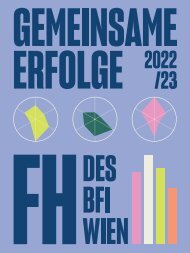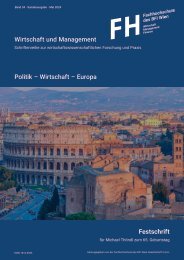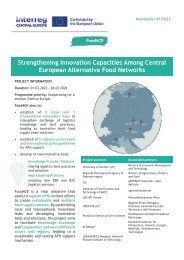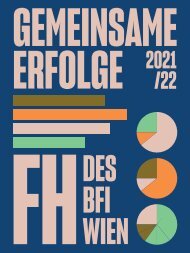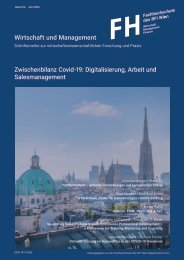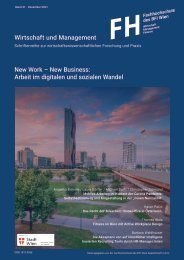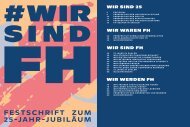The EU, the EEU, and the War in Ukraine: Political Risks and Management Options
This special issue entitled “The EU, the EEU, and the War in Ukraine: Political Risks and Management Options” is published within the framework of the Jean Monnet Network project “The EU and the EEU: Between Conflict and Competition, Convergence and Cooperation” (EUCON). The aim of this project co-funded by the Erasmus+ programme is to explore the complexity of relations between the European Union and the Eurasian Economic Union.
This special issue entitled “The EU, the EEU, and the War in Ukraine: Political Risks and Management Options” is published within the framework of the Jean Monnet Network project “The EU and the EEU: Between Conflict and Competition, Convergence and Cooperation” (EUCON). The aim of this project co-funded by the Erasmus+ programme is to explore the complexity of relations between the European Union and the Eurasian Economic Union.
- No tags were found...
You also want an ePaper? Increase the reach of your titles
YUMPU automatically turns print PDFs into web optimized ePapers that Google loves.
Oxana Karnaukhova<br />
In 2022, among <strong>the</strong> CA5, only Kazakhstan sufficiently demonstrates its leadership capabilities<br />
<strong>and</strong> will<strong>in</strong>gness to compete with established regional leaders – Russia, Turkey, etc. – <strong>in</strong> <strong>the</strong><br />
struggle for a favourable <strong>in</strong>vestment climate. In 2022 Kazakhstan took <strong>the</strong> 43rd place of 63<br />
national economies presented <strong>in</strong> <strong>the</strong> Global Competitiveness Index (GCI 2022) with 35th for<br />
<strong>the</strong> previous year. Among five Central Asian republics, only Kazakhstan is represented <strong>in</strong> <strong>the</strong><br />
World Economic Forum’s annual assessment. Among <strong>the</strong> challenges for 2022 presented by<br />
<strong>the</strong> Economic Research Institute (JSC of <strong>the</strong> M<strong>in</strong>istry of National Economy of <strong>the</strong> Republic of<br />
Kazakhstan) <strong>the</strong>re are political transformation, <strong>in</strong>crease <strong>in</strong> household <strong>in</strong>comes <strong>and</strong> reduction<br />
of <strong>in</strong>equality, streng<strong>the</strong>n<strong>in</strong>g human rights <strong>in</strong>stitutions, provid<strong>in</strong>g food security, <strong>and</strong> decentralization<br />
of local self-government (ibd). Curiously, <strong>the</strong> economic l<strong>and</strong>scape looks as follows: government<br />
efficiency as well as bus<strong>in</strong>ess efficiency sound susta<strong>in</strong>able for <strong>the</strong> period of 2018-2022<br />
<strong>and</strong> is on <strong>the</strong> 25th <strong>and</strong> 32nd place respectively. A significant drop <strong>in</strong> <strong>the</strong> <strong>in</strong>dex of economic<br />
performance from <strong>the</strong> 49th to <strong>the</strong> 58th position is a cause for concern. Comparably, Tajikistan<br />
took <strong>the</strong> 104th place <strong>in</strong> 2019, <strong>and</strong> Kyrgyz Republic <strong>the</strong> 96th. Uzbekistan <strong>and</strong> Turkmenistan have<br />
evaded assessment (GCR, 2019). Report 2019 h<strong>in</strong>ts at <strong>the</strong> need for structural change <strong>in</strong> <strong>the</strong> face<br />
of projected geopolitical risks, thus l<strong>in</strong>k<strong>in</strong>g <strong>the</strong> geopolitical context with economic susta<strong>in</strong>ability.<br />
Kazakhstan’s trade turnover with countries outside <strong>the</strong> Eurasian Economic Union (EA<strong>EU</strong>), as<br />
reported by <strong>the</strong> State Revenue Committee on July 19, 2022, <strong>in</strong>creased by 51.6 percent (<strong>The</strong><br />
Astana Times, 2022a). Despite an economic slowdown caused by <strong>the</strong> global p<strong>and</strong>emic <strong>and</strong><br />
<strong>the</strong> recent geopolitical events <strong>in</strong> Central Asia <strong>and</strong> Russia, Kazakhstan rema<strong>in</strong>s firm <strong>in</strong> its goal<br />
to provide a favorable <strong>in</strong>vestment climate <strong>and</strong> attract more <strong>in</strong>vestors. <strong>The</strong> role of <strong>the</strong> Foreign<br />
Investors’ Council (FIC), a Kazakh advisory <strong>and</strong> consultative body for <strong>in</strong>vestment, rema<strong>in</strong>s as<br />
important as ever (<strong>The</strong> Astana Times, 2022b).<br />
In addition to <strong>the</strong> demonstration of <strong>in</strong>dividual leadership from 2020, a unique format of regional<br />
<strong>in</strong>tegration has resurged on <strong>the</strong> grounds of mutually beneficial economic cooperation, <strong>the</strong> C5+1.<br />
<strong>The</strong> C5+1 economic cooperation format was created on <strong>the</strong> marg<strong>in</strong>s of <strong>the</strong> UN Assembly <strong>in</strong> 2015<br />
at <strong>the</strong> <strong>in</strong>itiative of <strong>the</strong> United States. It envisages a multilateral dialogue platform for cooperation<br />
between five Central Asian states – Kazakhstan, Uzbekistan, Turkmenistan, Tajikistan <strong>and</strong><br />
Kyrgyzstan – <strong>and</strong> <strong>the</strong>ir vis-à-vis worldwide.<br />
On October 15, 2020, <strong>the</strong> Foreign M<strong>in</strong>isters of <strong>the</strong> five Central Asian states <strong>and</strong> Russia met onl<strong>in</strong>e<br />
to adopt a “Statement of <strong>the</strong> Foreign M<strong>in</strong>isters of <strong>the</strong> Central Asian states <strong>and</strong> <strong>the</strong> Russian<br />
Federation on Strategic Directions for Cooperation” (Statement 2020). <strong>The</strong> third meet<strong>in</strong>g of this<br />
k<strong>in</strong>d signals <strong>the</strong> emergence of a diplomatic format similar to <strong>the</strong> American ‘C5+1’ that was established<br />
a few years ago. It should be noted that Ch<strong>in</strong>a, for its part, is also try<strong>in</strong>g to secure a similar<br />
“C5+1” approach to <strong>the</strong> region.<br />
<strong>The</strong> Kommersant newspaper writes: “From now on, Moscow will not only develop bilateral<br />
ties, but will consider Central Asia as a whole... This is a k<strong>in</strong>d of new strategy of Russian foreign<br />
policy <strong>in</strong> Central Asia”. However, it turns out that this is not a new strategy at all but <strong>the</strong> old<br />
one, as, “ accord<strong>in</strong>g to Moscow’s plan, <strong>the</strong> result of this process should be a jo<strong>in</strong>t vision for <strong>the</strong><br />
46 Wirtschaft und <strong>Management</strong> · B<strong>and</strong> 33 · März 2023




